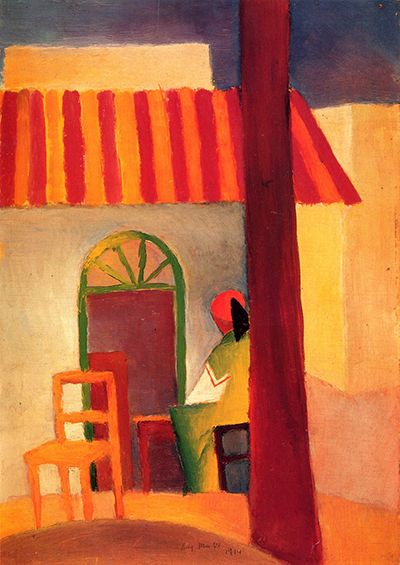August Macke produced a number of paintings in Bonn shortly after a trip to North Africa, including both Turkisches Cafe as well as a similar composition found here.
The artist was excited by islamic culture and would spend large amounts of time discovering its architecture, cuisine and fashion. The colours in some of these nations was vibrant, aided by the extraordinary light which flooded these busy cities for most of the day. He was able to obtain finance for a trip to the region with fellow artist, Paul Klee. He completed many series of drawings and watercolour paintings before developing some of them into oil works once home back in Germany. He was fully immersed in the culture during his period here and would no doubt have returned many more times were it not for his untimely death at the start of WWI. A quick check of the cafe reveals how Macke had reduced the entire seen to as few components as possible, in line with his movement towards complete abstraction.
Gerome is another artist to have become enchanted by the qualities of Islamic art and architecture, producing a whole series of artworks whilst travelling around North Africa and the Middle East. During this early period in the 20th century, many Europeans were still relatively uneducated when it came to cultures outside of their own and art such as this was an excellent way of creating accessible ways for the masses to understand more about their neighbours. This particular scene is simple, a local man sits besides a table, perhaps drinking some local tea. A chair remains to his side, unused, whilst the cafe itself is not overly designed, with a plain green decorative frame on the front door. Elements of light come in from the left hand side and the artist adds some striking coloured stripes to the roof.
The warm tones of this region were perfectly in tune with Macke's normal palette of colours. His domestic scenes would attempt to use the same colours, only with additional tones of green and blue in order to capture the German foliage, of which he was also a big supporter. Macke is just one of a number of artists since the Middle Ages who have sought new ideas from abroad and been open to all manner of influences in order to achieve the best work that they could.




